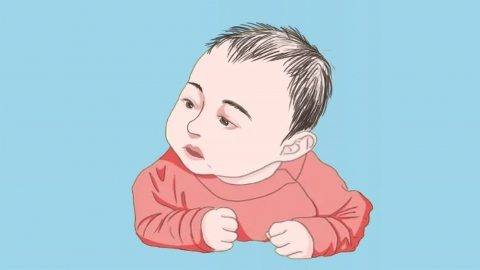What should be done about a three-year-old child having sparse hair?
A three-year-old child with sparse hair may be caused by genetic factors, growth and development stages, malnutrition, vitamin D deficiency, seborrheic dermatitis, and other factors. Management should be based on specific conditions. It is recommended that parents promptly take the child to the hospital for diagnosis and follow medical advice for appropriate treatment after the cause is identified.

1. Genetic factors: A child's sparse hair may be related to family genetics. If sparse hair exists in the family, the child may exhibit similar characteristics. Supporting hair growth can be achieved by improving lifestyle habits and nutrition, such as a balanced diet, consuming foods rich in protein, vitamins, and minerals, and using shampoo and conditioner suitable for children.
2. Growth and development stages: During a child's growth, changes in growth rate and hormone levels at different stages may affect hair growth, causing hair follicles to enter a resting phase, thereby temporarily reducing hair growth. Maintaining healthy lifestyle habits, providing nutrient-rich foods, and regular health check-ups can ensure the child's overall health is good.
3. Malnutrition: If a child lacks sufficient nutrition and develops malnutrition, the insufficient nutrients required for growth and development may lead to sparse hair. Adjusting the diet to increase intake of foods rich in protein, vitamins, and trace elements, such as eggs, milk, lean meat, fish, fresh vegetables, and fruits, is recommended.
4. Vitamin D deficiency: Vitamin D helps maintain bone health and promotes hair growth. A deficiency in vitamin D may cause hair follicles to enter a resting phase, affecting hair growth. It is recommended to increase vitamin D levels through sun exposure and dietary intake, while ensuring adequate calcium intake.
5. Seborrheic dermatitis: Seborrheic dermatitis may be related to genetic factors, fungal infection, and other causes, leading to excessive oil secretion on the scalp, clogging hair follicles, affecting normal hair growth, and possibly accompanied by symptoms such as scalp itching, flaking, and redness. Parents may follow medical advice to use medications such as compound sulfur cream, vitamin B6 tablets, and hydrocortisone cream for treatment.
Parents should closely monitor the child's health status, pay attention to balanced nutrition and good lifestyle habits, and create an environment conducive to healthy growth.








